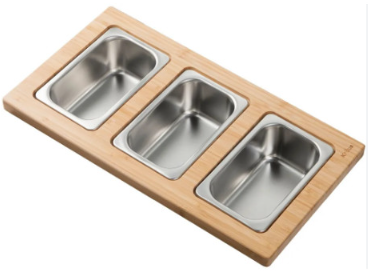When it comes to material testing and lab supply equipment, the choice of a rectangle stainless steel bowl holds significant importance. Whether you’re working with aggregates, asphalt, concrete, soils, or general lab applications, selecting the right size and depth ensures optimal performance and accuracy in your experiments and tests. Let’s explore the key considerations to help you make an informed decision.
Understanding the Importance of Size and Depth
The size of your rectangle stainless steel bowl directly impacts its usability and versatility in various lab applications. A larger bowl allows for testing larger samples, accommodating different quantities of materials, and facilitating thorough mixing and analysis. However, it’s essential to balance size with space constraints in your lab environment to ensure practicality and efficiency.
Delving into Depth
The depth of the bowl influences its capacity and the volume of materials it can hold. A deeper bowl provides ample space for mixing and testing larger quantities of materials, reducing the risk of spillage and contamination. Conversely, shallower bowls are suitable for smaller samples and applications where precision and control are paramount.
At Certified Material Testing Products, we understand the significance of size and depth in selecting the right rectangle stainless steel bowl for your lab needs. Our extensive range of bowls caters to diverse requirements, offering options in various sizes and depths to suit different applications. Whether you’re conducting aggregate testing, asphalt analysis, or general lab experiments, our stainless steel bowls are designed to deliver exceptional performance and reliability.
Application Specificity
Consider the specific requirements of your lab applications when determining the size and depth of your rectangle stainless steel bowl. Different tests and experiments may necessitate varying sample sizes and depths for accurate results. Assess the volume of materials typically used in your procedures to select an appropriately sized bowl that meets your needs.
Lab Space and Equipment Compatibility
Evaluate the available space in your lab and the compatibility of the bowl with existing equipment and workstations. Opt for a size and depth that allows for seamless integration into your workflow without causing overcrowding or logistical challenges. Additionally, consider the accessibility of the bowl for convenient handling and cleaning procedures.
FAQs:
Q1: Can I use a shallow bowl for all types of material testing?
A: While shallow bowls offer precision and control for smaller samples, they may not be suitable for tests requiring larger quantities of materials. Assess the specific requirements of your experiments to determine the most appropriate bowl depth.
Q2: What size of the bowl is ideal for general lab applications?
A: For general lab applications, consider a medium-sized bowl that offers versatility in accommodating various sample sizes. It should strike a balance between capacity and practicality, ensuring efficient utilization in diverse experiments.
Conclusion:
Choosing the right size and depth for your rectangle stainless steel bowl is essential for enhancing the efficiency and accuracy of your lab work. By considering factors such as application specificity, lab space, and equipment compatibility, you can make an informed decision that meets your unique requirements. At certifiedmtp.com, we offer a comprehensive selection of high-quality stainless steel bowls to support your material testing and lab supply needs. Explore our range today to find the perfect solution for your laboratory.




